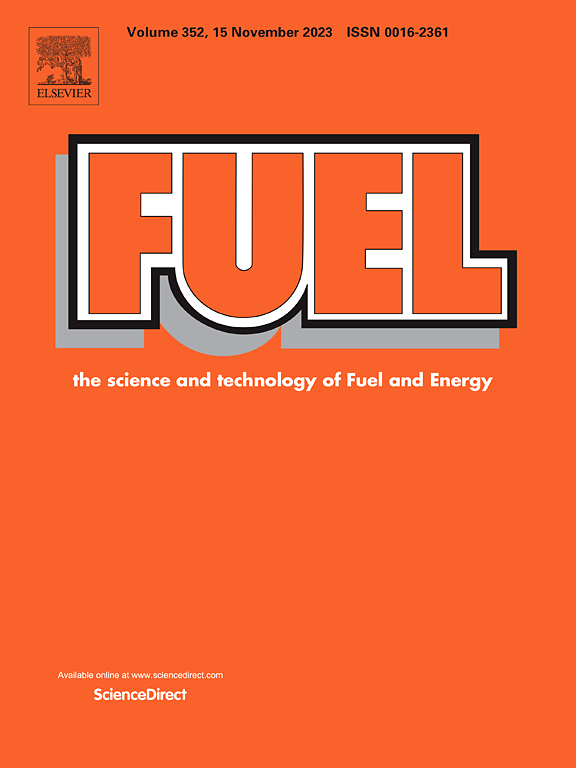Insights into predicting equilibrium conditions of clathrate hydrates of methane + water-soluble hydrate former
IF 6.7
1区 工程技术
Q2 ENERGY & FUELS
引用次数: 0
Abstract
This study aims to improve the prediction of equilibrium conditions in methane hydrate systems by incorporating diverse water-soluble hydrate formers and applying advanced machine learning techniques. Methane hydrates, which naturally form under high pressure and low temperature, can be more efficiently formed or dissociated by altering thermodynamic conditions using these hydrate formers. Accurate prediction of these conditions is crucial for optimizing gas storage and energy applications. In this research, molecular descriptors and operational parameters, such as mole fraction and pressure, are used as input variables to predict equilibrium temperature. Machine learning methods, including Decision Trees (DT), Random Forests (RF), Support Vector Machines (SVM), and Multi-Layer Perceptron (MLP), were employed with a novel data-splitting approach based on hydrate formers rather than traditional sample-based methods. Among these models, the RF achieved the highest performance, with a coefficient of determination (R2) of 0.930, a root mean square error (RMSE) of 1.71, and an average absolute relative deviation (AARD) of 0.48%. Feature selection, preprocessing, and Shapley Additive Explanations (SHAP) provided valuable insights into the influence of specific variables on model predictions. Additionally, a supplementary examination, termed the reduced model, highlights the critical role of proper feature selection, with certain features regarded as less important yet essential for the functionality of distance-based models, particularly for models like SVM and MLP. This work advances methane hydrate research by offering a more accurate and interpretable framework for predicting hydrate equilibrium, addressing key gaps in previous studies, and extending its applicability to a broader range of systems. Moreover, the introduction of a former-based data-splitting method improves generalization across different hydrate formers, while the use of SHAP values for model interpretability offers deeper insights into the relationships between molecular descriptors and hydrate equilibrium conditions. This study paves the way for improved selection of hydrate formers in hydrate systems.
预测甲烷+水溶性水合物前体包合物水合物平衡条件的见解
本研究旨在通过结合多种水溶性水合物形成物和应用先进的机器学习技术来改善甲烷水合物体系平衡条件的预测。甲烷水合物是在高压和低温下自然形成的,通过改变这些水合物形成物的热力学条件,可以更有效地形成或解离。准确预测这些条件对于优化天然气储存和能源应用至关重要。在本研究中,分子描述符和操作参数,如摩尔分数和压力,被用作输入变量来预测平衡温度。机器学习方法,包括决策树(DT)、随机森林(RF)、支持向量机(SVM)和多层感知器(MLP),采用了一种新的基于水合物形成物的数据分割方法,而不是传统的基于样本的方法。其中,射频模型表现最佳,其决定系数(R2)为0.930,均方根误差(RMSE)为1.71,平均绝对相对偏差(AARD)为0.48%。特征选择、预处理和Shapley加性解释(SHAP)为特定变量对模型预测的影响提供了有价值的见解。此外,一种称为简化模型的补充检查强调了适当的特征选择的关键作用,某些特征被认为不太重要,但对于基于距离的模型的功能至关重要,特别是对于SVM和MLP这样的模型。这项工作通过提供更准确和可解释的框架来预测水合物平衡,解决先前研究中的关键空白,并将其适用性扩展到更广泛的系统,从而推进了甲烷水合物研究。此外,引入基于前驱的数据分割方法提高了不同水合物形成体的泛化能力,而使用SHAP值进行模型可解释性,可以更深入地了解分子描述符与水合物平衡条件之间的关系。本研究为改进水合物体系中水合物形成物的选择铺平了道路。
本文章由计算机程序翻译,如有差异,请以英文原文为准。
求助全文
约1分钟内获得全文
求助全文
来源期刊

Fuel
工程技术-工程:化工
CiteScore
12.80
自引率
20.30%
发文量
3506
审稿时长
64 days
期刊介绍:
The exploration of energy sources remains a critical matter of study. For the past nine decades, fuel has consistently held the forefront in primary research efforts within the field of energy science. This area of investigation encompasses a wide range of subjects, with a particular emphasis on emerging concerns like environmental factors and pollution.
 求助内容:
求助内容: 应助结果提醒方式:
应助结果提醒方式:


